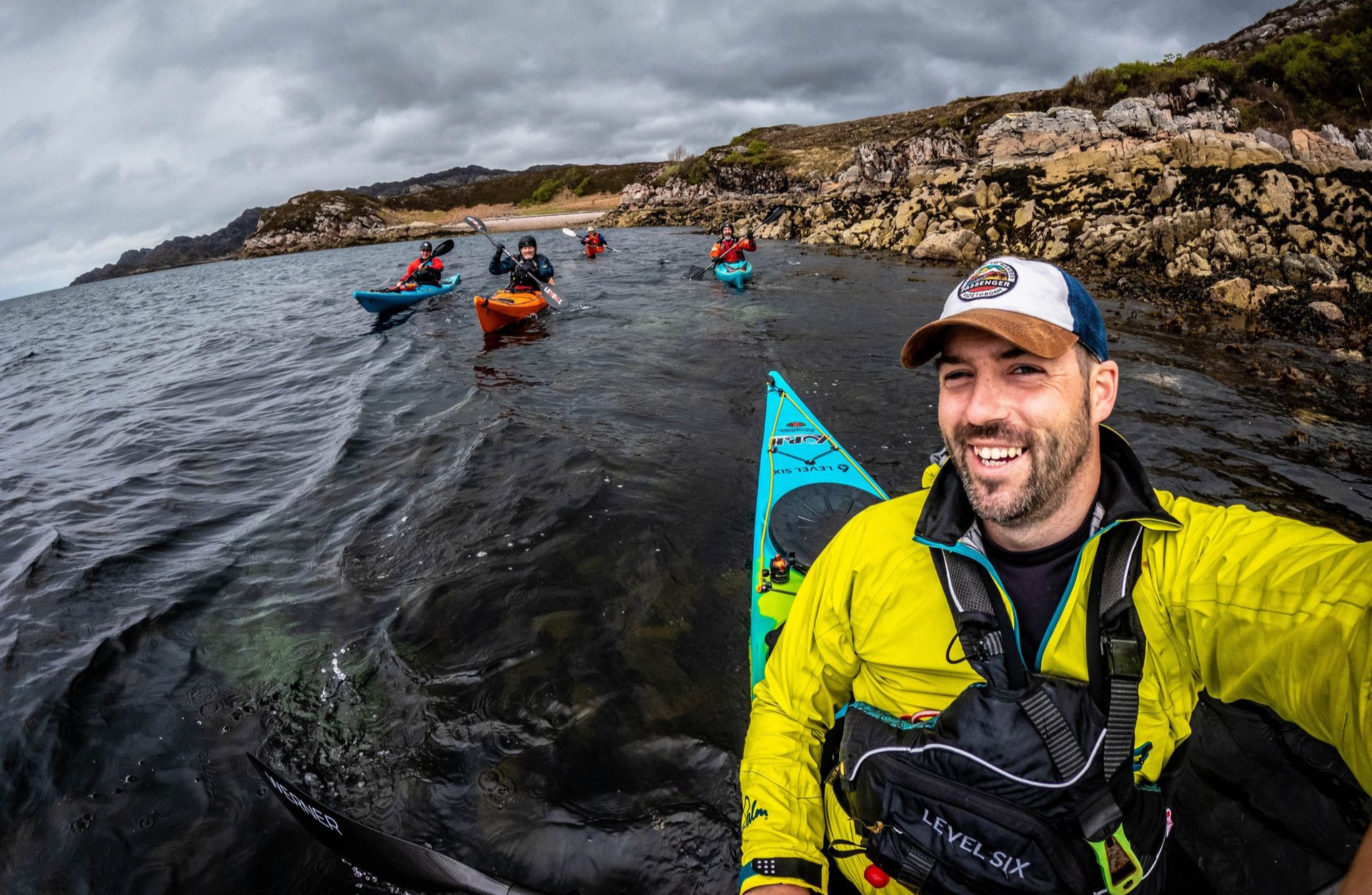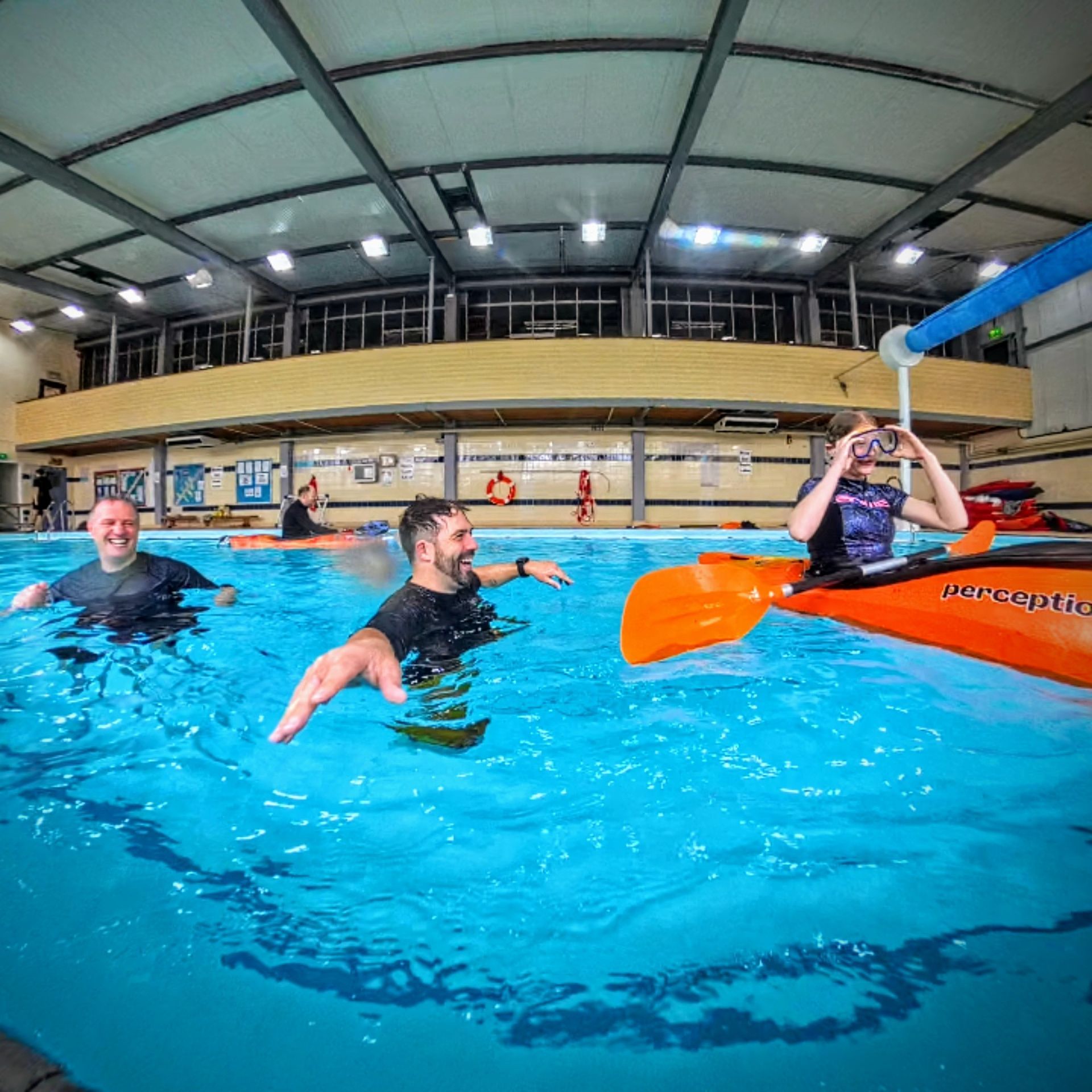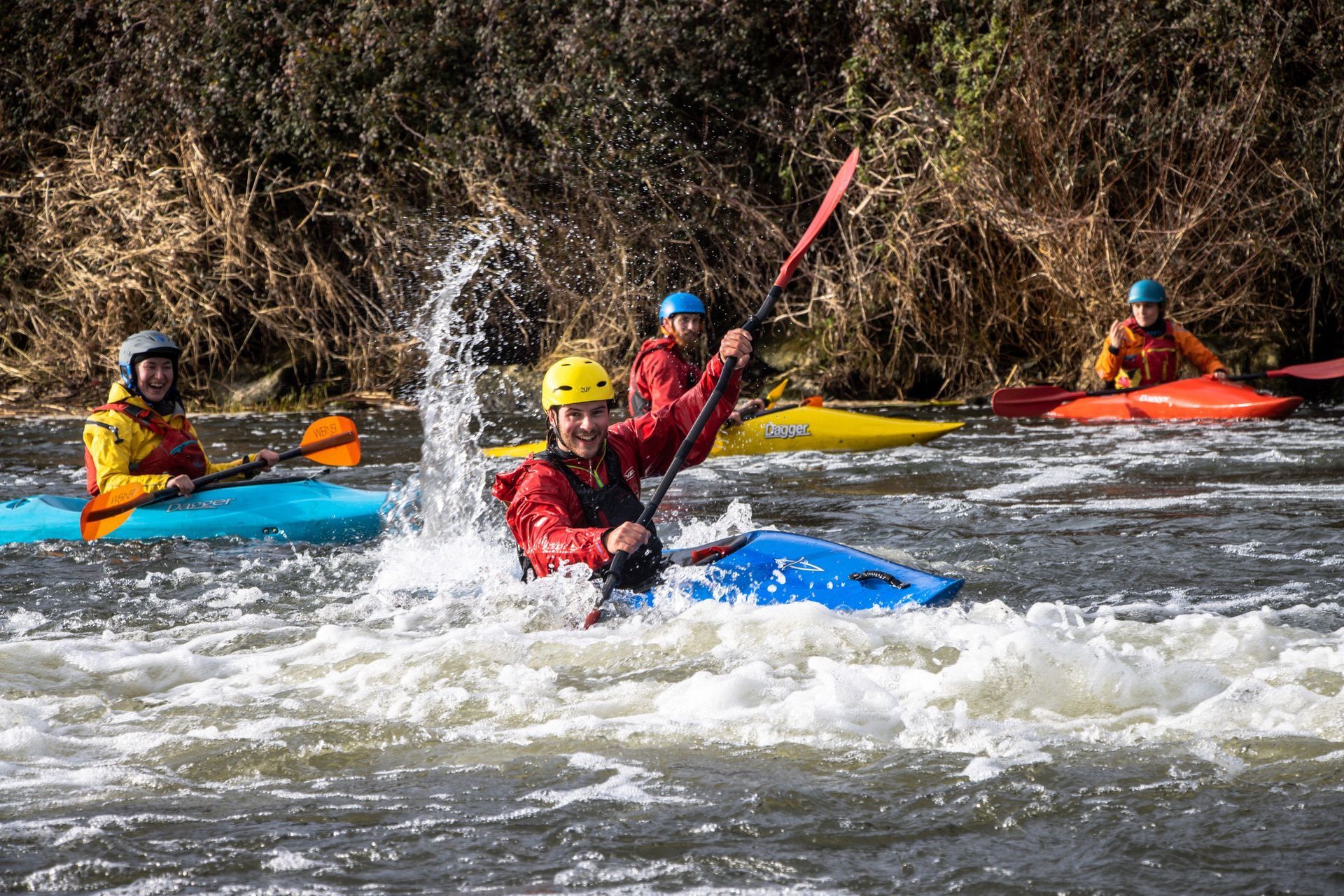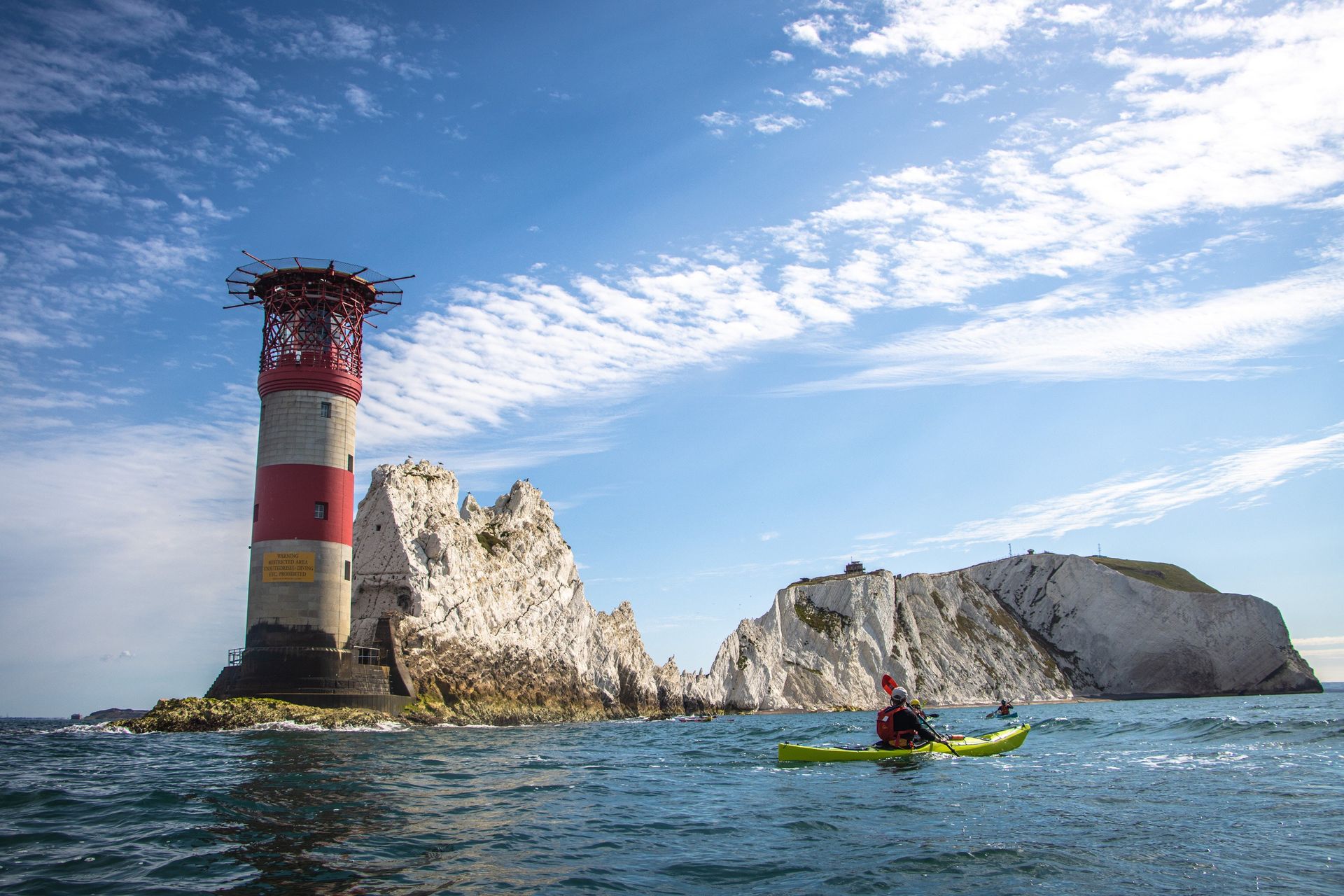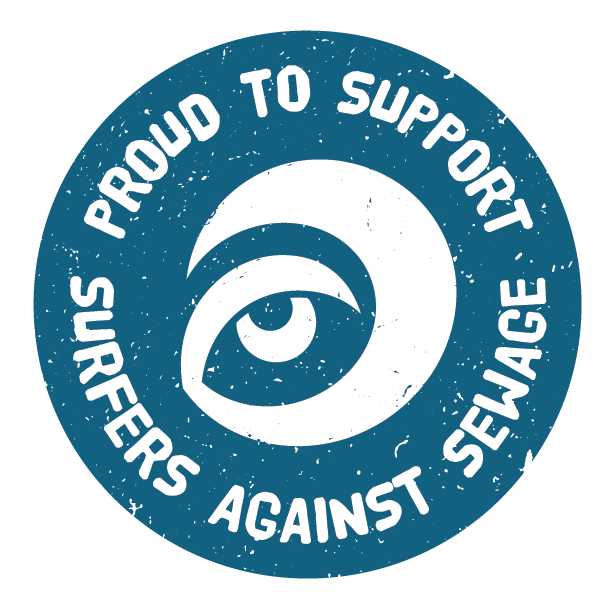What to take when paddling
What to Take Kayaking – Our Essential Kit Guide
Whenever we head out for a paddle, having the right equipment is key — not just for comfort, but for safety too. Equally, you don’t want to weigh yourself down with half your garage in the boat. Packing smart makes your day smoother, safer, and way more enjoyable.
So, what do we take — and where do we put it all?
Here’s our personal guide to making equipment-carrying second nature, without the faff. As with everything in paddling, your kit depends on what you’re doing and where you’re going — but these basics will see you right.
Personal Equipment
Buoyancy Aid (BA)
Your most important piece of kit. No matter how strong a swimmer you are, always wear one. A BA keeps you afloat during rescues, adds warmth, and gives you somewhere to stash a snack or whistle. Think of it like a seatbelt — it’s not about your confidence, it’s about safety.
Cagoule (Cag)
Spray tops, semi-dry, full-dry — there’s a version for every condition. Hoods and fleece-lined pockets are brilliant for sea kayaking; short sleeves are perfect for summer river days.
Wetsuit
A solid starting point — warm, comfy, and affordable. Long-john styles are great for paddling, keeping your core warm while allowing freedom of movement around the shoulders.
Dry Suit
Pricey, yes — but if you’re on the water regularly, they’re worth every penny. Full-body protection from the elements with latex wrist and neck seals keeps you dry and toasty no matter the conditions.
Base Layers
Rash vests and synthetic thermals wick away moisture and keep you warm, even when wet. Wool also works well, but it takes longer to dry. Avoid cotton — it stays cold and heavy once soaked.
Spray Deck
Nylon decks are great for beginners — easy to release and less claustrophobic. Neoprene decks fit tighter, keeping more water out, and are perfect once you’re rolling confidently.
Footwear
Choose something sturdy enough for slippery riverbanks or rocky coastlines, but slim enough to fit comfortably inside your boat. Wetsuit boots or neoprene shoes with solid soles work a treat, especially in winter.
Headwear
If there’s any risk of bumping your head, wear a helmet — especially on white water or surf. For touring and sea paddling, it’s a personal call, but one you’ll only get wrong once.
Personal Safety Kit
First Aid & Safety Gear
A small first aid kit is always worth carrying — plasters, tape, and antiseptic wipes for scrapes and cuts. Add a spare hat, gloves, and fleece for warmth, plus a group shelter for bad weather. Bright colours help attract attention if you need it.
Food & Water
Even a short paddle burns more energy than you think. Pack water, a snack, and maybe a flask in cold weather — nothing beats a hot drink after a swim!
Communication
Everyone has a phone — keep yours in a waterproof case. Always tell someone where you’re going and when you’ll be back. If you’re out longer or on the sea, consider a
VHF radio (with the proper licence).
Scenarios
Sea Kayaking Day Trip
- VHF radio: To contact the Coastguard or check the weather.
- Flares: For emergency signalling in poor visibility.
- Bilge pump: To empty water after rescues.
- Tow line: Handy for helping others or holding kit.
- Spare paddle: In case yours breaks or drifts away.
- Chart & tide info: Essential for navigation and landing points.
- Compass: Always carry one — batteries can die, but bearings don’t.
- Repair kit: Multi-tool, duct tape, or flash band can fix almost anything.
- Lighting: Head torch or glow sticks for low-light paddling.
White Water Day Trip
- Guidebook: Tells you grades, access, and portages.
- OS Map: Know your surroundings and escape routes.
- Throw line & knife: If you carry rope, carry a knife — always.
- Spare splits: Compact paddles that pack inside your boat.
- Pinning kit: Slings and karabiners for recovering stuck boats.
SUP Touring – River
- Quick-release waist leash: A must for any moving water, allowing you to detach safely in flow.
- Waterproof phone case: Clip it to your PFD or deck bungee for easy access.
- Dry bag or deck bag: Store snacks, a small first aid kit, and a spare layer.
- Footwear: Neoprene shoes or lightweight trainers for comfort on landings and portages.
- Tow line or short cord: For helping a tired paddler or towing your board if you need to walk a section.
- Warm layer or windproof jacket: You’ll feel the chill faster standing up — pack accordingly.
- Small repair kit: A patch or valve tool can save your session if your board starts leaking.
SUP / Inflatable Kayak – Open Water (e.g. Studland Bay)
- Ankle leash: Suitable for open water or estuary paddling where there’s minimal flow.
- Buoyancy aid: Always — even for confident swimmers.
- Mobile phone or VHF: In a waterproof case, attached to your PFD or board.
- Wind awareness: Offshore winds can be dangerous; plan to paddle into the wind first and return with it behind you.
- Chart or local map: Know your landmarks and potential exit points.
- Anchor point or tow line: Handy for rest stops or assisting others.
- Sun protection: Even mild days can catch you out — hat, sunglasses, and reef-safe suncream are essential.
- Hydration & snacks: Touring boards have plenty of space — make use of it!
How to Pack
Dry bags are your best friend — small, sealable, and easy to cram into spare spaces. Lots of little bags are better than one big one. Make sure they’re clipped to your boat or board so nothing disappears downstream.
Weight balance: Spread gear evenly. In sea kayaks, keep slightly more weight forward to help tracking and control. On SUPs, centre the weight between your feet to maintain stability.
Quick access: Keep lunch, hat, and essentials in a day hatch, deck bag, or bungee so you’re not unpacking your entire boat for a sandwich.
Top Tip
Go and have a try! The best way to learn what works for you is to get out there. Test your setup, adapt, and remember — every paddle teaches you something new.
Pack smart, stay safe, and keep paddling with care for the waters we call home. 🌊
